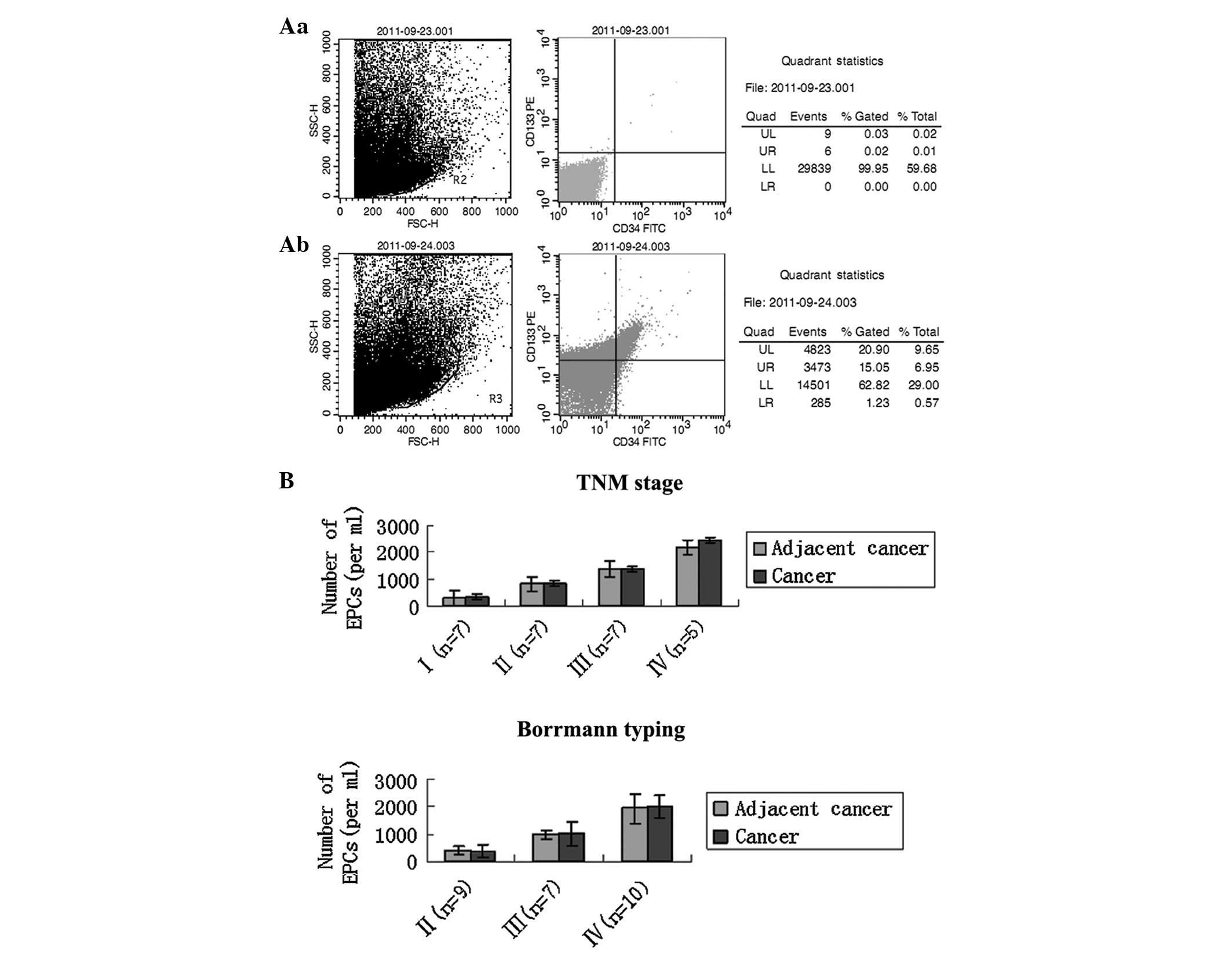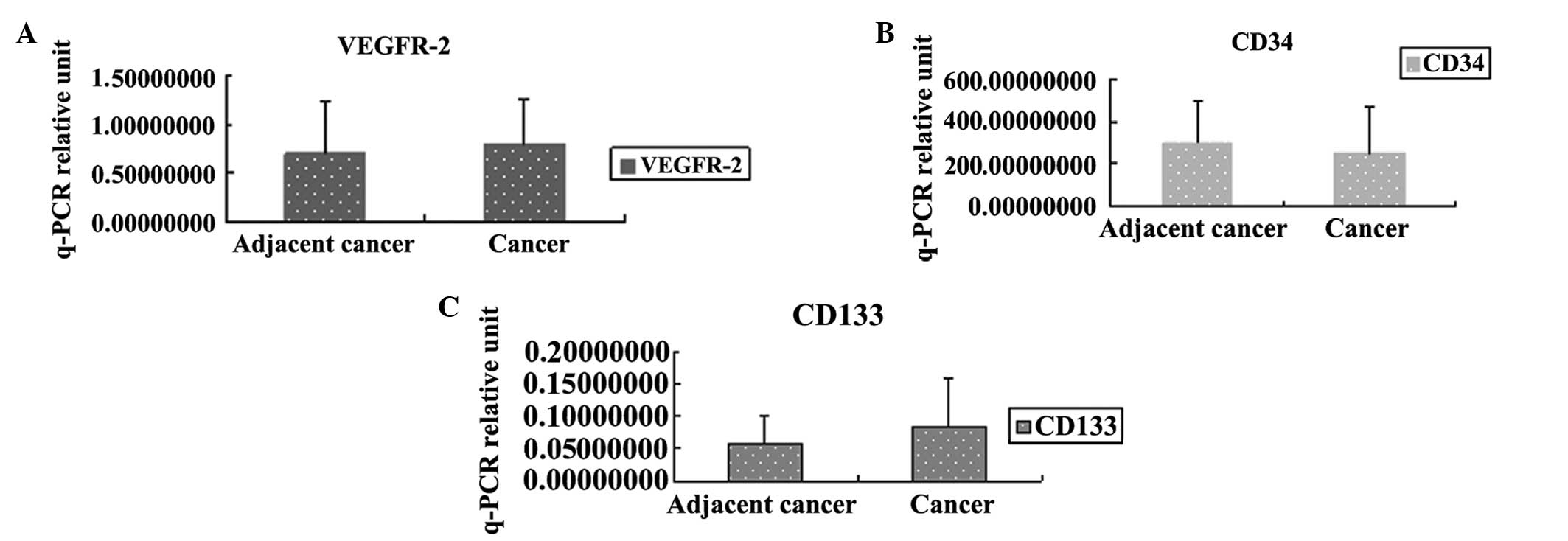|
1
|
Asahara T, Masuda H, Takahashi T, et al:
Bone marrow origin of endothelial progenitor cells responsible for
postnatal vasculogenesis in physiological and pathological
neovascularization. Circ Res. 85:221–228. 1999. View Article : Google Scholar
|
|
2
|
Asahara T, Murohara T, Sullivan A, et al:
Isolation of putative progenitor endothelial progenitor cells for
angiogenesis. Science. 275:964–967. 1997. View Article : Google Scholar
|
|
3
|
Gehling UM, Ergün S, Schumacher U, et al:
In vitro differentiation of endothelial cells from
AC133-positive progenitor cells. Blood. 95:3106–3112. 2000.
|
|
4
|
Vizio B, Novarino A, Giacobino A, et al:
Pilot study to relate clinical outcome in pancreatic carcinoma and
angiogenic plasma factors/circulating mature/progenitor endothelial
cells: Preliminary results. Cancer Sci. 101:2448–2454. 2010.
View Article : Google Scholar
|
|
5
|
Rafat N, Beck GCh, Schulte J, Tuettenberg
J and Vajkoczy P: Circulating endothelial progenitor cells in
malignant gliomas. J Neurosurg. 112:43–49. 2010. View Article : Google Scholar : PubMed/NCBI
|
|
6
|
Su Y, Zheng L, Wang Q, et al: Quantity and
clinical relevance of circulating endothelial progenitor cells in
human ovarian cancer. Journal Exp Clin Cancer Res. 29:272010.
View Article : Google Scholar
|
|
7
|
Dome B, Timar J, Dobos J, et al:
Identification and clinical significance of circulating endothelial
progenitor cells in human non-small cell lung cancer. Cancer Res.
66:7341–7347. 2006. View Article : Google Scholar
|
|
8
|
Ahn JB, Rha SY, Shin SJ, et al:
Circulating endothelial progenitor cells (EPC) for tumor
vasculogenesis in gastric cancer patients. Cancer Lett.
288:124–132. 2010. View Article : Google Scholar
|
|
9
|
Sussman LK, Upalakalin JN, Roberts MJ,
Kocher O and Benjamin LE: Blood markers for vasculogenesis increase
with tumor progression in patients with breast carcinoma. Cancer
Biol Ther. 2:255–256. 2003. View Article : Google Scholar : PubMed/NCBI
|
|
10
|
Cesari F, Caporale R, Marcucci R, et al:
NT-proBNP and the anti-inflammatory cytokines are correlated with
endothelial progenitor cells’ response to cardiac surgery.
Atherosclerosis. 199:138–146. 2008.PubMed/NCBI
|
|
11
|
Ha X, Zhao M, Zhao H, et al:
Identification and clinical significance of circulating endothelial
progenitor cells in gastric cancer. Biomarkers. 18:487–492. 2013.
View Article : Google Scholar : PubMed/NCBI
|
|
12
|
Kamangar F, Dores GM and Anderson WF:
Patterns of cancer incidence, mortality, and prevalence across five
continents: defining priorities to reduce cancer disparities in
different geographic regions of the world. J Clin Oncol.
24:2137–2150. 2006. View Article : Google Scholar
|
|
13
|
Parkin DM, Bray F, Ferlay J and Pisani P:
Global cancer statistics, 2002. CA Cancer J Clin. 55:74–108. 2005.
View Article : Google Scholar
|
|
14
|
Jemal A, Siegel R, Ward E, et al: Cancer
statistics, 2008. CA Cancer J Clin. 58:71–96. 2008. View Article : Google Scholar
|
|
15
|
Hartgrink HH, Putter H, Klein Kranenbarg
E, Bonenkamp JJ and van de Velde CJ; Dutch Gastric Cancer Group.
Value of palliative resection in gastric cancer. Br J Surg.
89:1438–1443. 2002. View Article : Google Scholar
|
|
16
|
Rafii S, Lyden D, Benezra R, Hattori K and
Heissig B: Vascular and haematopoietic stem cells: novel targets
for anti-angiogenesis therapy? Nat Rev Cancer. 2:826–835. 2002.
View Article : Google Scholar
|
|
17
|
Shaked Y, Bertolini F, Man S, et al:
Genetic heterogeneity of the vasculogenic phenotype parallels
angiogenesis; Implications for cellular surrogate marker analysis
of antiangiogenesis. Cancer Cell. 7:101–111. 2005.
|
|
18
|
Kopp HG, Ramos CA and Rafii S:
Contribution of endothelial progenitors and proangiogenic
hematopoietic cells to vascularization of tumor and ischemic
tissue. Curr Opin Hematol. 13:175–181. 2006. View Article : Google Scholar
|
|
19
|
Wong CY, Qiuwaxi J, Chen H, et al: Daily
intake of thiamine correlates with the circulating level of
endothelial progenitor cells and the endothelial function in
patients with type II diabetes. Mol Nutr Food Res. 52:1421–1427.
2008. View Article : Google Scholar
|
|
20
|
Liu LX, Lu H, Luo Y, et al: Stabilization
of vascular endothelial growth factor mRNA by hypoxia-inducible
factor-1. Biochem Biophys Res Commuu. 291:908–914. 2002. View Article : Google Scholar
|
|
21
|
Timmermans F, Plum J, Yöder MC, Ingram DA,
Vandekerckhove B and Case J: Endothelial progenitor cells: identity
defined? J Cell Mol Med. 13:87–102. 2009. View Article : Google Scholar
|
|
22
|
Duda DG, Cohen KS, Scadden DT and Jain RK:
A protocol for phenotypic detection and enumeration of circulating
endothelial cells and circulating progenitor cells in human blood.
Nat Protoc. 2:805–810. 2007. View Article : Google Scholar
|
















